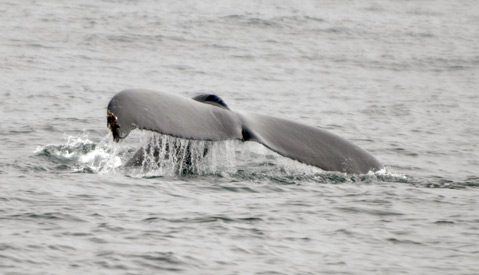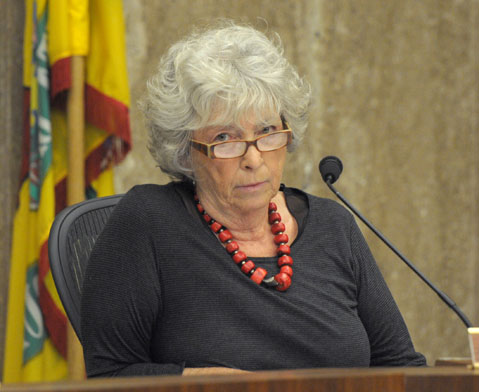Seismic Studies for Diablo Canyon Rejected
Whales, Porpoises Trump Earthquake Questions at Nuclear Plant

It wasn’t even close. On November 14, the California Coastal Commission unanimously voted to reject a proposal by Pacific Gas & Electric (PG&E) Company to conduct high-energy, high-decibel, three-dimensional underwater tests off the coast of Avila Beach. The tests were supposed to help gauge how great a threat the miles of offshore earthquake faults would be to the Diablo Canyon nuclear power plant. Would an anticipated earthquake deliver a seismic wallop beyond what the plant is currently engineered to withstand? The project as proposed would require blasting air guns capable of delivering 250-decibel pulses underwater, which protesters claimed would seriously damage marine life, not to mention the fishing industry. The commission sided with the protesters.
PG&E’s environmental report claimed that the damage to the whales, porpoises, and fish would be temporary and that the gun blasts were necessary to provide high-resolution images of the subsurface geology lying 10 miles beneath the ocean floor. They sought to determine if the two main faults, plus other smaller ones, intersected in a way that would dramatically intensify the force of an earthquake. The report predicted that most sea creatures would remove themselves from the affected areas before the noise endangered them. And to help this, PG&E proposed ratcheting up the volume gradually. The company also planned to use an expensive system of monitors, including trained professionals scouring the waters, to ensure no sea mammals got within the danger zone. If the perimeters were penetrated, PG&E pledged to stop the blasting.

But the 200 people packing the meeting — held in Santa Monica — were far from persuaded. In recent months, PG&E’s seismic tests had become a cause célèbre. Images of porpoises with blood pouring from their ears galvanized passionate outrage from environmentalists nationally. Other than PG&E’s representatives, not one person spoke in favor of the proposal. The Coastal Commission received 10,000 emails in opposition.
The irony is that PG&E proposed these $64- million tests only with the greatest of reluctance. A small group of wonky nuclear watchdogs, alarmed by the discovery in 2008 of a “new” fault just half a mile off the coast from Diablo Canyon’s twin towers, pushed for the testing. Led by Alliance for Nuclear Responsibility, Mothers for Peace, and two prominent San Luis Obispo politicians who just happen to have PhDs in offshore earthquake geology — former state senator Sam Blakeslee and County Supervisor Bruce Gibson — they used the Fukushima disaster to prod state regulatory agencies such as the California Energy Commission and the Public Utilities Commission to require PG&E to conduct these studies.
They did not accept PG&E’s assurance — or that of the Nuclear Regulatory Commission (NRC) either — that the plant was built to withstand far greater ground acceleration than anything the newly discovered fault could ever generate. The 3-d studies — used commonly by the oil industry to determine the location of offshore deposits — would show whether the Shoreline Fault intersected with the better known Hosgri Fault, located two miles off the coast from Diablo, and to what extent that intersection added significantly to the cumulative ground motion that might rock the plant. But even these watchdogs had serious doubts about PG&E’s proposal. They worried it wasn’t state-of-the-art enough, that the testing vessel had problems, that it would take too long, and that the area was too large. Even though PG&E reduced the impact zone four times in the months prior to the Coastal Commission meeting, none were won over.
Staff planners for the commission argued they didn’t have enough information for the commission to render an informed decision. But PG&E actively resisted any delay. Its representatives demanded an up-or-down vote. And they got it. Given that half the commissioners expressed opinions hostile to the very existence of Diablo Canyon and wanted it shut down — something far beyond the commission’s scope of authority — the results were predictable. Other commissioners argued the NRC, not the Coastal Commission, was responsible for the safety of the plant. And the NRC just released a statement two weeks ago testifying that the plant was seismically safe and sound. In the meantime, PG&E will soon release the results of its less intense and less intrusive studies on what lies a mile below the ocean floor near Diablo Canyon. But missing from the equation will be anything deeper.



